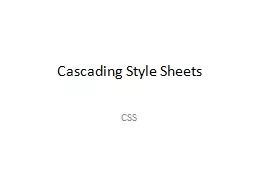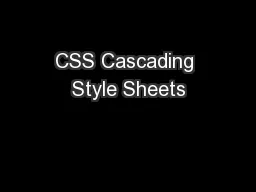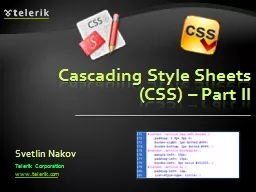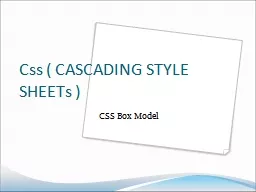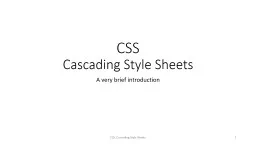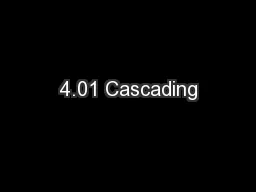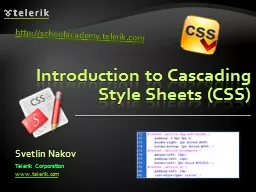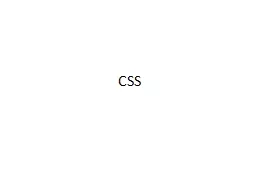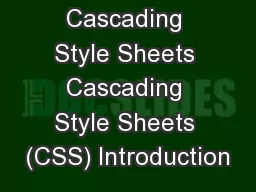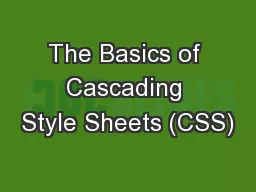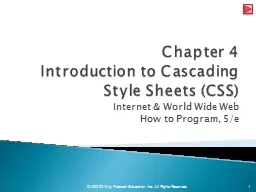PPT-Cascading Style Sheets CSS
Author : hirook | Published Date : 2020-06-20
Learning outcome CSS Introduction Motivation Advantages Implementation Classes amp Ids ltspan gt and lt divgt General Model Validation CSS Introduction HTML was
Presentation Embed Code
Download Presentation
Download Presentation The PPT/PDF document "Cascading Style Sheets CSS" is the property of its rightful owner. Permission is granted to download and print the materials on this website for personal, non-commercial use only, and to display it on your personal computer provided you do not modify the materials and that you retain all copyright notices contained in the materials. By downloading content from our website, you accept the terms of this agreement.
Cascading Style Sheets CSS: Transcript
Download Rules Of Document
"Cascading Style Sheets CSS"The content belongs to its owner. You may download and print it for personal use, without modification, and keep all copyright notices. By downloading, you agree to these terms.
Related Documents

